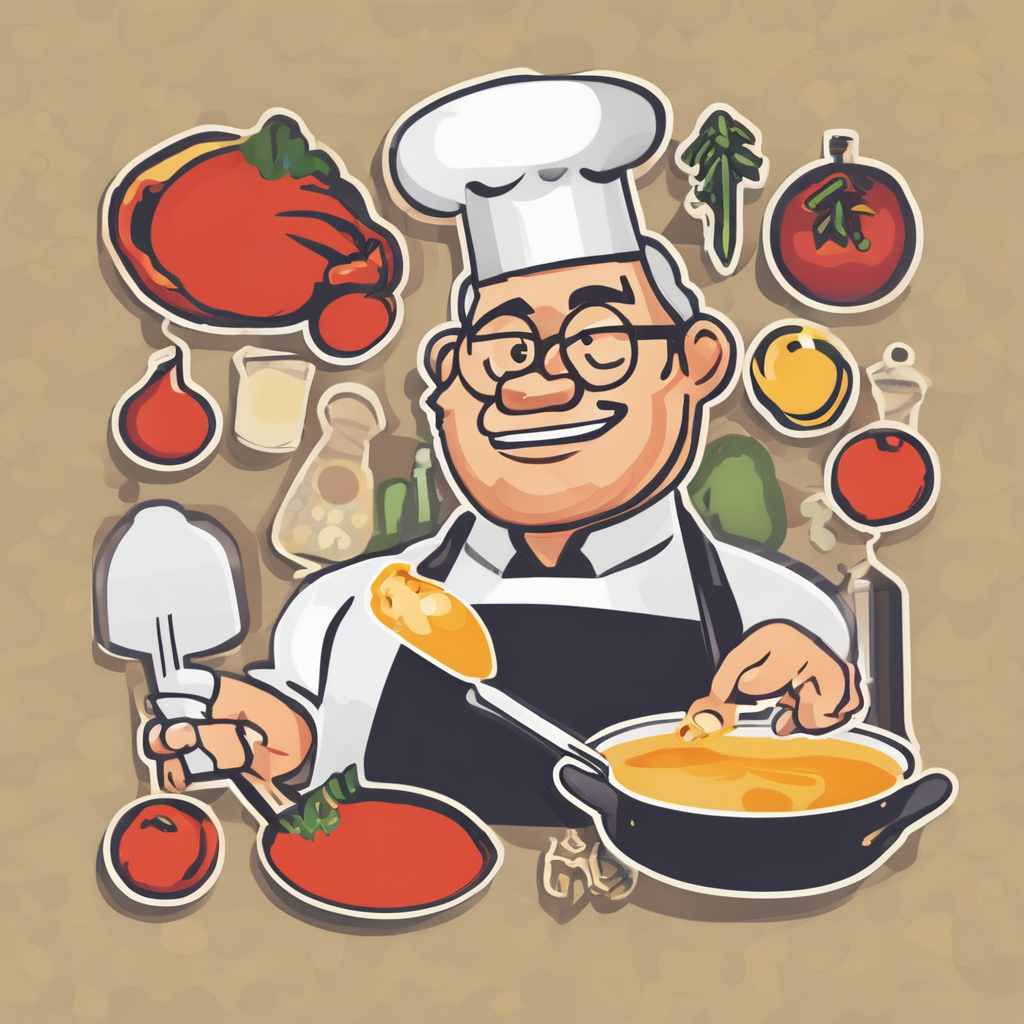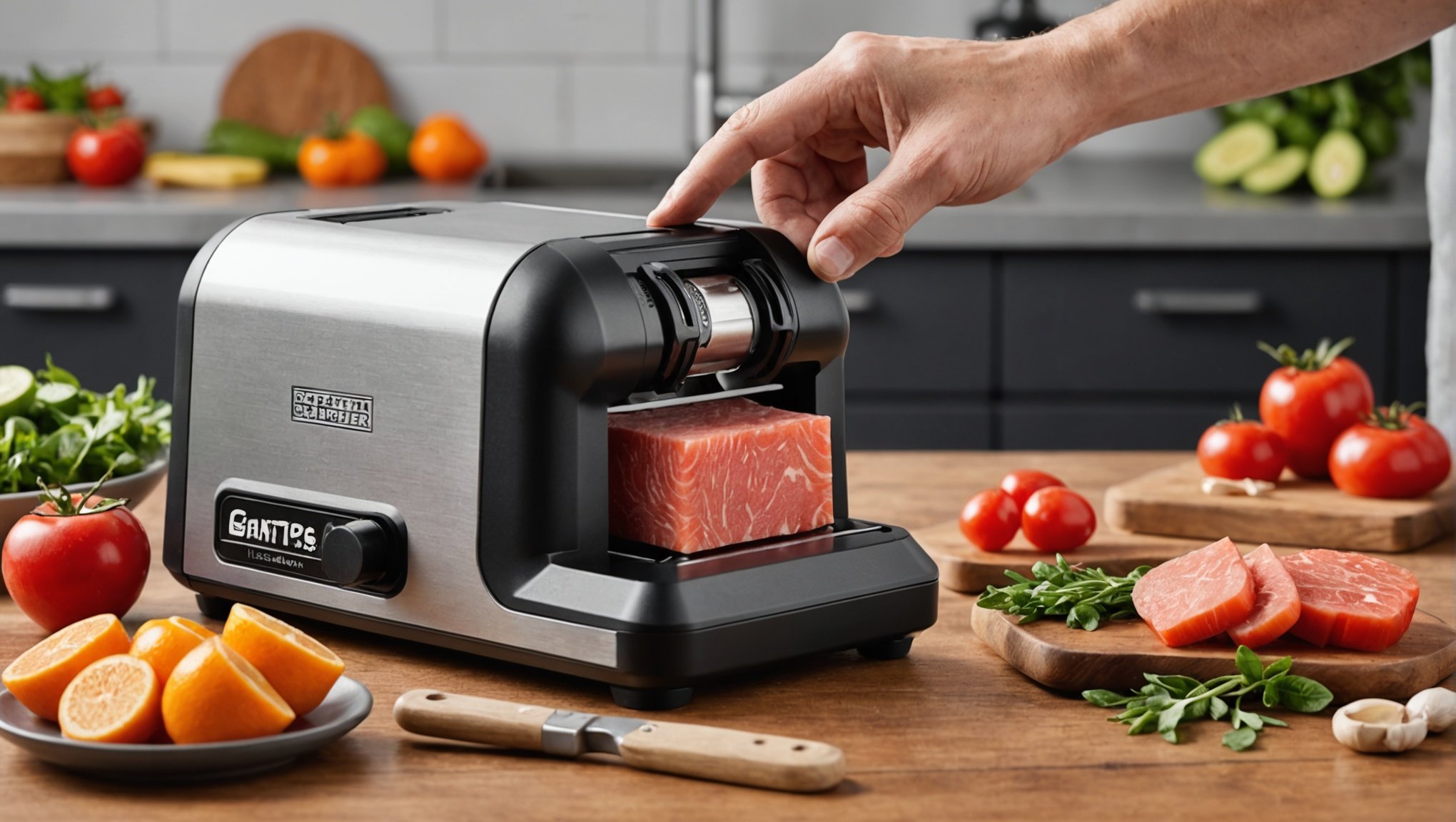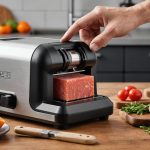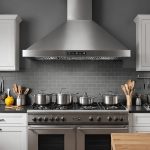A high-protein kitchen demands precision. Dull knives can hinder your culinary creations and compromise safety. Discovering the ideal knife sharpener design tailored to your cooking needs can elevate your food preparation experience. From honing steel to electric sharpeners, the right choice ensures your blades maintain their edge, allowing for smooth, efficient cuts. Say goodbye to frustration in the kitchen and unlock the full potential of your culinary skills with expertly sharpened knives. Let's explore the options best suited for enhancing your cooking journey!
Understanding the Importance of a Good Knife Sharpener
A knife sharpener plays a crucial role in enhancing kitchen performance. In a high-protein kitchen, efficiency is key. Sharp knives are essential for precise cuts, which are particularly important when preparing protein-heavy dishes. Dull knives can lead to uneven cuts, affecting both the texture and presentation of meals.
Additional reading : Exploring the Ideal Patterns and Textures of Kitchen Curtains for Optimal Sunlight Filtering and Temperature Control
Enhancing Kitchen Efficiency
Incorporating a knife sharpener into your routine can significantly boost kitchen efficiency. Sharp knives reduce the effort required in cutting, slicing, and dicing, saving time and energy. This efficiency is especially beneficial in a high-protein kitchen, where protein-rich ingredients like meat and fish demand precision.
Common Issues with Dull Knives
Dull knives can pose several challenges in the kitchen:
Also to read : Boost Your Hydration Habits: The Impact of a Kitchen Counter Water Reminder Device on Daily Fluid Intake
- Increased risk of injury due to slipping
- Inefficient cuts leading to waste
- Difficulty in achieving desired textures
These issues can be particularly frustrating when cooking protein-heavy dishes. A knife sharpener can resolve these problems, ensuring your knives are always ready for action.
"The secret to a chef's success lies in the sharpness of their tools."
By maintaining sharp knives, you not only enhance your cooking experience but also ensure the quality of your high-protein meals. Investing in a good knife sharpener is a practical decision that pays off in the long run.
Types of Knife Sharpeners
Exploring different knife sharpening options can enhance your kitchen experience.
Manual vs. Electric Sharpeners
When considering manual sharpeners and electric sharpeners, it's essential to understand their distinct features. Manual sharpeners offer precision and control, allowing you to sharpen at your own pace. They are often more affordable and portable, making them ideal for those who prefer a hands-on approach. In contrast, electric sharpeners provide speed and convenience, perfect for busy cooks who need quick results.
Advantages of Honing Rods
Honing rods are invaluable tools for maintaining knife sharpness. Unlike sharpeners, honing rods realign the blade's edge without removing metal. Regular use of a honing rod keeps knives in optimal condition, reducing the need for frequent sharpening. This tool is particularly beneficial for maintaining the longevity of your knives.
Choosing the Right Sharpener
Selecting the appropriate sharpener depends on your cooking style. If you value precision and control, a manual sharpener might be your best choice. For those who prioritize speed, an electric sharpener could be more suitable. Incorporating a honing rod into your routine ensures consistent knife performance.
"A sharp knife is a chef's best ally."
Understanding your needs will help you make an informed decision, enhancing your culinary efficiency.
Key Features to Look for in a Knife Sharpener
Discover the essential characteristics that enhance your kitchen tools.
Essential Features for High-Protein Foods
When selecting a knife sharpener, consider features that benefit the preparation of high-protein foods. A sharpener with multiple grit options allows for both coarse sharpening and fine honing, ensuring your knives are ready for precise cuts. Additionally, a robust sharpening mechanism can handle the demands of frequent use, crucial in a protein-rich kitchen.
Importance of Blade Compatibility
Compatibility with various blade types is paramount. A versatile sharpener should accommodate straight-edged, serrated, and even ceramic blades. This adaptability ensures all your kitchen knives maintain optimal sharpness. Look for sharpeners with adjustable angles to cater to different blade profiles, enhancing their efficiency and longevity.
User-Friendly Designs for Efficient Sharpening
Ease of use is a significant consideration. User-friendly designs often feature ergonomic handles and non-slip bases for stability during sharpening. These elements simplify the process, making it accessible even for those new to knife maintenance.
- Multiple grit options for varied sharpening needs
- Adjustable angles for diverse blade types
- Ergonomic handles for comfort and control
"A user-friendly sharpener turns a chore into a pleasure."
By prioritizing these features, you ensure your knife sharpener is both effective and convenient, enhancing your overall culinary experience.
Top Knife Sharpeners for High-Protein Cooking
Discover the best tools for maintaining your culinary edge.
Manual Knife Sharpeners
Manual knife sharpeners are favored for their precision and control, especially in high-protein kitchens. The Chef's Choice 4643 ProntoPro is a top pick, known for its three-stage sharpening system that accommodates both straight and serrated blades. Its ergonomic handle ensures comfort during use.
- Three-stage sharpening for versatile use
- Ergonomic design for ease and safety
- Highly rated by users for precision
User reviews highlight its effectiveness in achieving razor-sharp edges, essential for precise cuts in protein-rich dishes.
Electric Knife Sharpeners
For those who prioritize speed, electric knife sharpeners like the Presto 08800 EverSharp offer quick results. With a two-stage system, it sharpens and hones, ensuring your knives are always ready for action. Its user-friendly design makes it accessible to all skill levels.
- Two-stage sharpening for efficient results
- User-friendly design for convenience
- Positive feedback on speed and efficiency
Honing Rods
Honing rods are crucial for maintaining sharpness between sharpening sessions. The Dalstrong Honing Rod is praised for its durable construction and ability to realign blades effortlessly.
- Durable build for longevity
- Effective realignment of blade edges
- Popular choice for regular maintenance
"A well-maintained knife is a chef's silent partner in the kitchen."
Comparing Price Points of Knife Sharpeners
Understanding the balance between cost and quality is crucial for choosing the right tool.
Price Ranges for Different Types
When evaluating knife sharpener pricing, it's important to consider the wide range of options available. Manual sharpeners typically range from $10 to $50, offering a budget-friendly solution for those seeking affordability without sacrificing quality. On the other hand, electric sharpeners can cost between $40 and $150, catering to those who prioritize speed and convenience. For those who prefer premium choices, high-end models can exceed $200, providing advanced features and superior performance.
Evaluating Value Based on Features
The value of a knife sharpener is often determined by its features and performance. Budget-friendly options may offer basic sharpening capabilities, ideal for occasional use. However, premium choices often include multiple grit options, adjustable angles, and compatibility with various blade types, ensuring comprehensive sharpening solutions. It's essential to weigh these features against the price to determine the best fit for your needs.
Recommendations for Budget-Friendly vs. Premium Options
- Budget-Friendly Options: Great for everyday use, affordable, and easy to store.
- Premium Choices: Ideal for frequent use, offering enhanced durability and precision.
"Investing in the right sharpener can transform your kitchen experience."
By understanding these price points, you can make an informed decision that aligns with your culinary requirements.
Maintenance Tips for Knife Sharpeners
Ensuring your knife sharpener remains in top condition is essential for long-term efficiency.
Best Practices for Sharpener Care
Regular maintenance of your knife sharpener is crucial for optimal performance and longevity. Start by cleaning the sharpener after each use. Use a soft brush to remove metal shavings and debris, ensuring the sharpening surfaces remain clear. For electric sharpeners, unplug the device before cleaning to avoid any electrical hazards.
Importance of Regular Maintenance
Consistent maintenance not only enhances the performance of your sharpener but also extends its lifespan. Regular checks help identify any wear and tear early, allowing for timely repairs or adjustments. A well-maintained sharpener ensures your knives remain sharp, reducing the risk of injury and improving cutting efficiency.
Signs of Wear and Replacement Needs
Be vigilant for signs that your sharpener may need replacement or repair. Common indicators include:
- Diminished sharpening performance, requiring more effort for results
- Visible damage to the sharpening surfaces or mechanisms
- Unusual noises during operation
"A neglected sharpener can dull your kitchen experience."
By following these maintenance tips, you ensure your knife sharpener remains a reliable tool in your culinary arsenal, providing consistent and precise results. Regular care not only protects your investment but also enhances your overall kitchen efficiency.
Usage Tips for Optimal Knife Sharpening
Master the art of keeping your knives in peak condition.
Techniques for Effective Sharpening
To achieve optimal knife sharpening, it's essential to use the correct techniques. Begin by selecting the appropriate angle for your blade type, typically between 15 to 20 degrees. Use smooth, even strokes to maintain consistency. Applying uniform pressure is key to avoiding uneven edges. Regularly alternating sides ensures a balanced grind, critical for maintaining your knife's performance.
Recommended Frequency for Sharpening Knives
For those engaging in high-protein cooking, sharpening frequency becomes pivotal. Aim to sharpen your knives every 3 to 4 weeks, depending on usage intensity. Frequent sharpening ensures precision cuts and enhances kitchen efficiency. Incorporating a honing rod in between sharpening sessions can further prolong the blade's sharpness, minimizing the need for constant sharpening.
Kitchen Hacks to Enhance Knife Performance
Enhancing your knife's performance doesn't stop at sharpening. Simple kitchen hacks can make a significant difference.
- Use a cutting board made of wood or plastic to preserve blade integrity.
- Avoid dishwasher cleaning to prevent dulling.
- Dry knives immediately after washing to prevent rust.
"A sharp knife not only cuts better but also elevates the cooking experience."
By implementing these knife sharpening techniques and kitchen hacks, you ensure your tools remain in top condition, ready for any culinary challenge.
Design Considerations for Knife Sharpeners
Exploring ergonomic features and portability for enhanced user experience.
Importance of Ergonomic Design
An ergonomic design in a knife sharpener significantly impacts user comfort and efficiency. Features such as ergonomic handles and non-slip bases ensure stability and reduce strain during use. These design elements are crucial for maintaining control, especially during extended sharpening sessions, enhancing the overall user experience.
Features Enhancing Portability
For home cooks, portability is an essential consideration when selecting a sharpener. Compact and lightweight designs allow for easy storage and transport, making them ideal for small kitchens or for those who frequently cook in different locations. A portable sharpener ensures that you can maintain your knives' sharpness wherever you are, without the need for bulky equipment.
Impact on User Experience and Efficiency
The design of a knife sharpener directly influences its efficiency and user satisfaction. A well-designed sharpener facilitates a smoother, more efficient sharpening process, reducing the time and effort required.
- Ergonomic features enhance comfort and control
- Compact portability for easy storage and transport
- Efficient design for quick, effective sharpening
"A thoughtfully designed sharpener transforms a routine task into an enjoyable experience."
By focusing on these design considerations, you ensure that your knife sharpener not only performs well but also enriches your culinary endeavors.
Visual Aids for Effective Knife Sharpening
Enhance your understanding and results with visual guides.
The Role of Images and Diagrams
Visual aids such as images and diagrams play a crucial role in mastering knife sharpening techniques. They provide clear, step-by-step instructions, making it easier to understand complex processes. For instance, a diagram illustrating the correct angle for sharpening helps prevent common mistakes, ensuring your knives remain in peak condition.
Recommended Visual Resources
Utilizing visual guides can significantly improve your sharpening skills. Consider resources like instructional videos and detailed diagrams that demonstrate the sharpening process. These aids offer a visual representation of techniques, making it easier to replicate them at home. Knife sharpener images showcasing different angles and strokes can be particularly beneficial for beginners.
How to Use Visual Aids for Better Results
Incorporating visual aids into your routine can lead to better results in the kitchen. By following diagrams and images, you can ensure consistency and precision in your sharpening efforts.
- Study diagrams to understand blade angles
- Watch tutorial videos for practical demonstrations
- Refer to images of properly sharpened blades for comparison
"A picture is worth a thousand words, especially when mastering new skills."
By leveraging these visual resources, you enhance your ability to maintain sharp, efficient knives, ultimately improving your culinary experience.
Conclusion and Summary of Recommendations
Reflecting on the essentials for effective kitchen tools.
Key Takeaways for Knife Sharpener Selection
When considering a knife sharpener, it's vital to remember the importance of selecting a tool that aligns with your individual needs. The choice between manual and electric sharpeners should be guided by your cooking style and preference for precision or speed. Additionally, incorporating a honing rod can maintain your knife's edge between sharpening sessions.
Best Practices for Maintaining Efficiency
To maximize kitchen efficiency, regularly maintain your knife sharpener according to best practices. Clean the sharpener after each use to ensure optimal performance. Pay attention to signs of wear, such as diminished sharpening performance, and replace the tool as needed to keep your knives in peak condition.
- Regular cleaning to remove metal shavings
- Consistent maintenance for longevity
- Timely replacement to maintain sharpness
Encouragement for Personalization
Selecting the right sharpener is a personal decision. Consider the variety of options available and choose one that complements your culinary habits. Whether you prioritize ergonomic design, portability, or multiple grit options, ensure your selection enhances your kitchen experience.
"The best knife sharpener is one that fits seamlessly into your routine, making every meal preparation a pleasure."
By focusing on these recommendations, you can maintain an efficient and enjoyable cooking environment.











